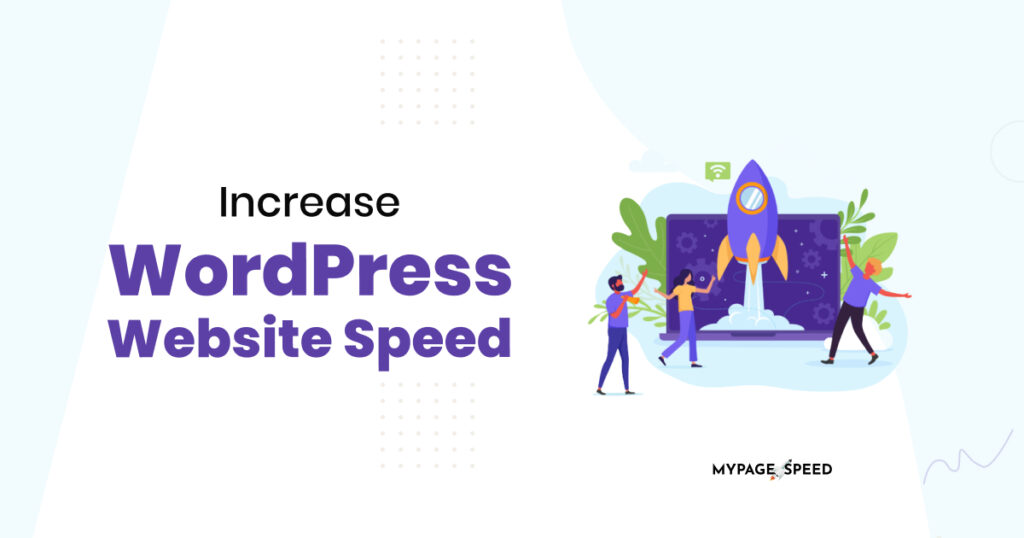WordPress Website speed matters a lot in today’s changing digital world. A slow-loading website can frustrate visitors, impact search engine rankings, and lead to missed opportunities. For website owners, optimizing website speed is important. They can’t ignore it. Here, we will discuss improving your website’s speed without plugins. You can get a faster website by using these ways. It will help you to provide a better user experience and boost your website’s performance in search engine results.
Top Ways to Increase Your WordPress Website Speed Without Plugin
- Improve Your Site Hosting
- Optimizing your images without a plugin
- Upgrade to The Newest Version of PHP
- Enable browser caching in WordPress without plugins
- Compress Your Websites’ Media Files
- Optimize Your Website Homepage
- Deactivating unnecessary WordPress plugins
- Measuring the speed results
1. Improve Your Site Hosting
Choosing the right hosting provider is paramount for WordPress speed optimization. Opt for a hosting company known for its speed and reliability. Shared hosting may be cost-effective but results in slower website performance due to resource sharing. For better speed and responsiveness, consider upgrading to managed WordPress or virtual private server hosting. Hosting providers like Bluehost, SiteGround, or Kinsta offer optimized solutions that significantly enhance your website’s loading times.
2. Optimizing Your Images Without a Plugin
Images often contribute to website bloat and slow loading times. To optimize images without a plugin, you can manually compress and resize them before uploading. Tools like Adobe Photoshop or online services like TinyPNG can help reduce image file sizes without compromising quality. Additionally, leverage responsive image techniques with HTML and CSS to serve appropriately sized images to different devices, ensuring faster loading on mobile and desktop.
3. Upgrade to The Newest Version of PHP
PHP is the scripting language powering WordPress. It is regularly updated with performance improvements. Ensure that your website runs the updated version compatible with your WordPress installation. You can check it through your hosting control panel or by contacting your hosting provider. Upgrading to a newer PHP version can result in speed enhancements for your WordPress website.
4. Enable Browser Caching in WordPress Without Plugins
Browser caching keeps static website files on a visitor’s device. This lowers the need to reload these assets each time a user visits your site, improving load times. You can use directives in your server settings or Content Delivery Networks (CDNs), which include browser caching as part of their services.
5. Compress Your Websites’ Media Files
Compressing your website’s media files can reduce page load times. Tools like HandBrake for videos and Audacity for audio allow you to compress these files without compromising quality. Additionally, consider using modern web formats like WebP for images, which offer better compression ratios while maintaining visual quality. By optimizing your media files, you’ll ensure a faster website for your users.
6. Optimize Your Website Homepage
The homepage is the first impression for any visitor to your website. To optimize it for speed, lower resource-heavy elements like large images or complex animations. Implement lazy loading for images below the fold, which delays their loading until the user scrolls to them. Limit the number of posts displayed on the homepage and use excerpts instead of full content. Reducing the number of elements and optimizing the layout can significantly improve your website’s loading times.
7. Disable Unnecessary WordPress Plugins
While this article focuses on speed optimization without plugins, it’s important to check unnecessary plugins that can slow down your website. Review your installed plugins and uninstall any that are not actively used. Each plugin adds extra code and can impact your site’s performance. You can maintain a leaner, faster website by keeping only essential plugins and optimizing their configurations.
8. Measuring the Speed Results
After applying these speed optimization techniques to your website, measuring the results is important. Use online speed testing tools like Google PageSpeed Insights, GTmetrix, or Pingdom to check your website’s loading times. These tools provide insights and recommendations for further improvement. Regularly monitor your website’s speed, as factors like increased content or traffic can affect performance over time. Continuously fine-tune and optimize your website to ensure it remains fast and responsive.
Final Words
You can enhance your site’s performance using speed optimization strategies without depending on plugins. Regularly measure and monitor your website’s speed to ensure it remains at its best. Prioritizing WordPress speed optimization is a proactive step that can significantly impact your online success.
